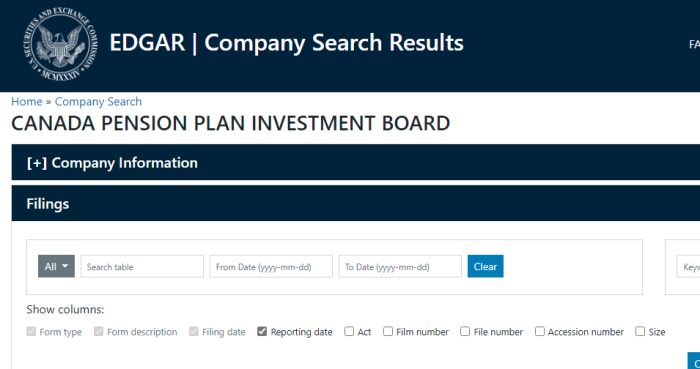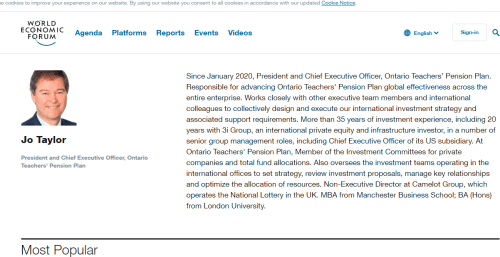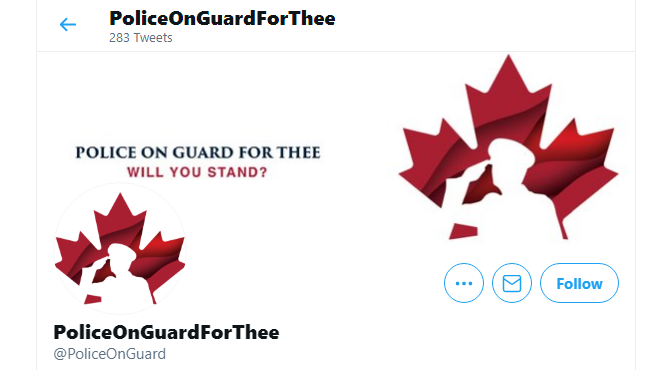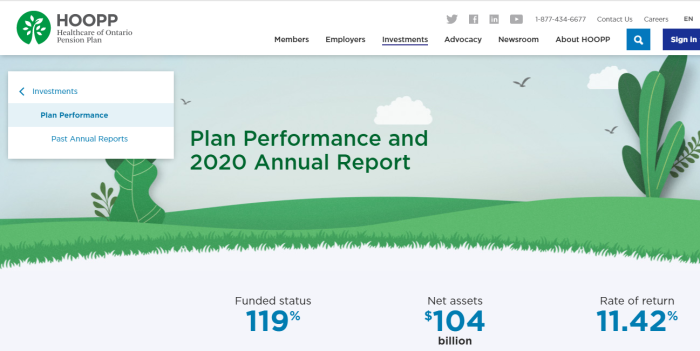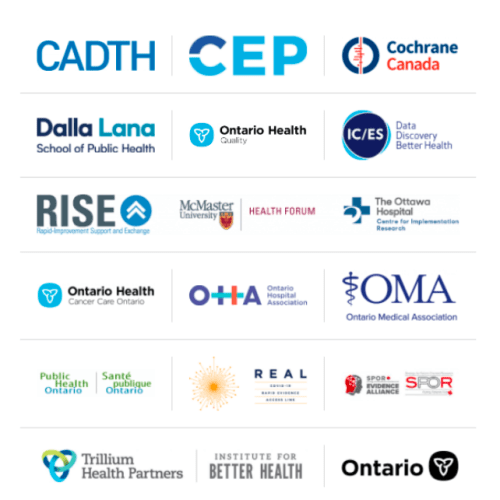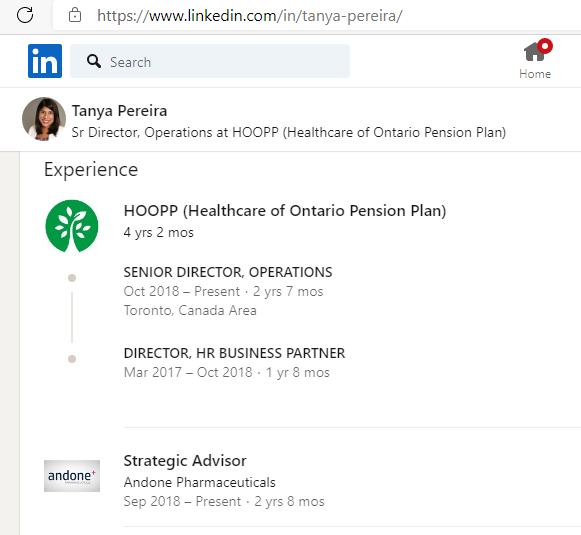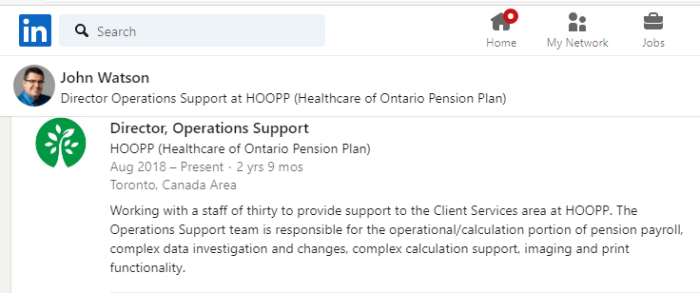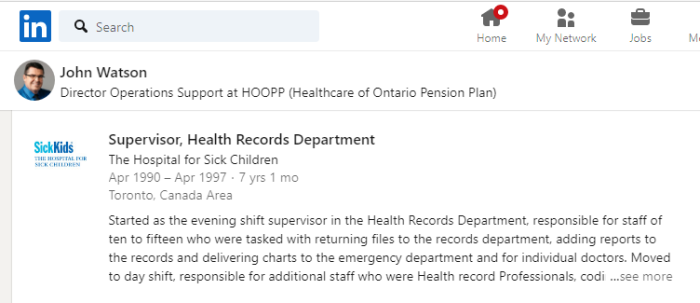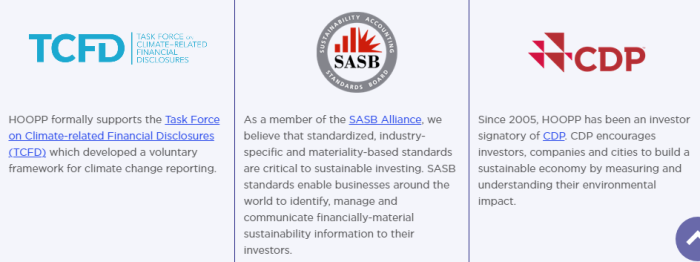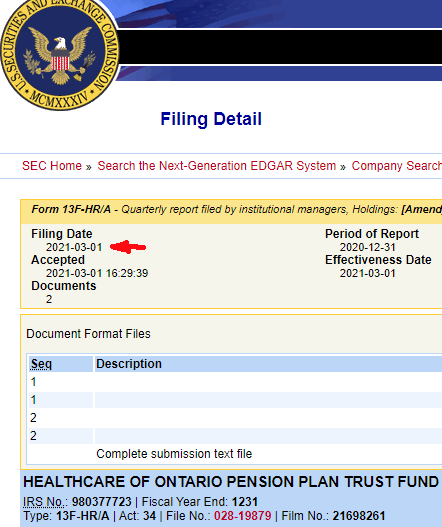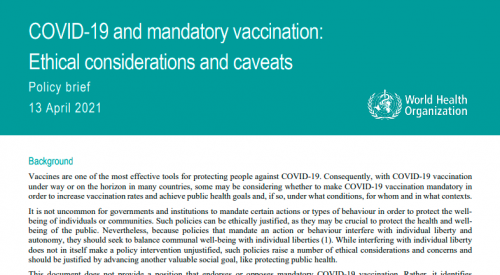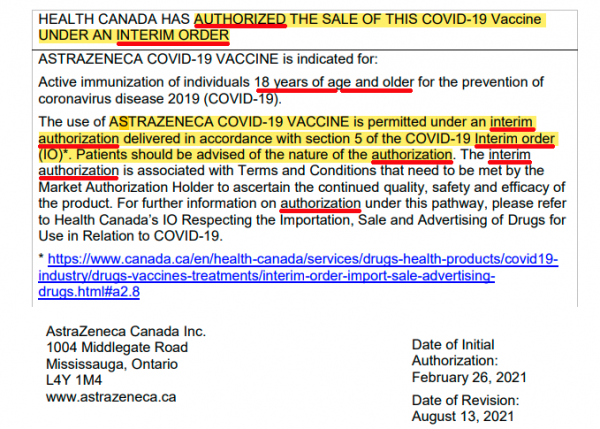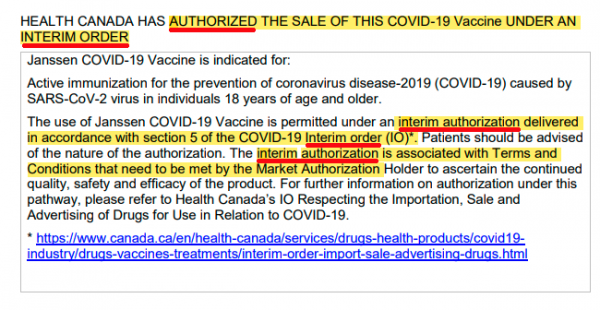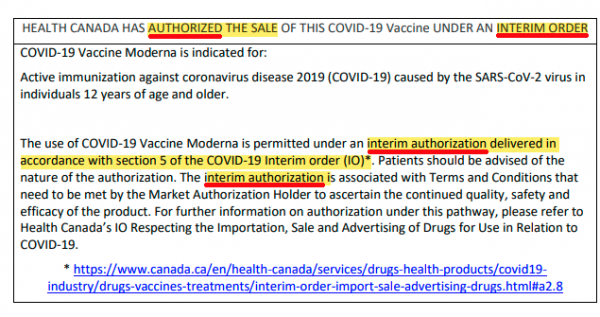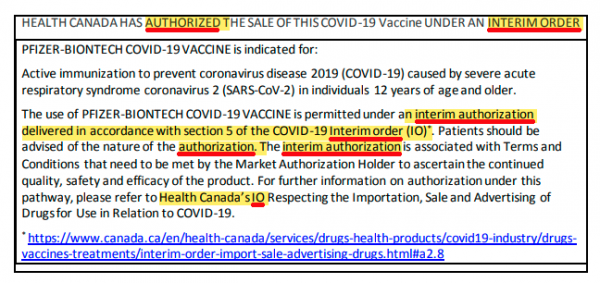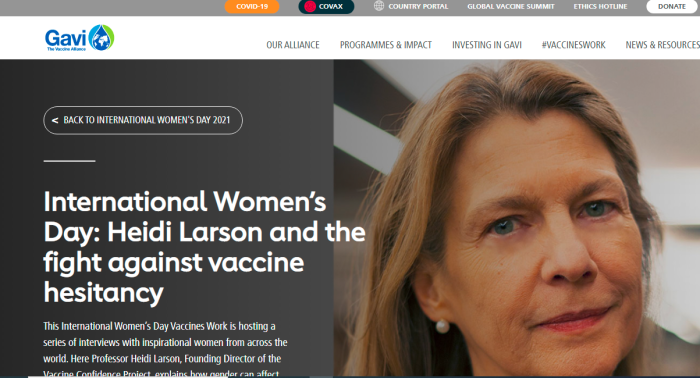
Heidi Larson is a bit of a superstar for the pharmaceutical industry, and its allies. It’s well known that GAVI, the Global Alliance for Vaccines and Immunization, is heavily funded by the Gates Foundation, and big pharama. GAVI has also been lobbying the Canadian Parliament for years, and getting hundreds of millions of dollars in grants.
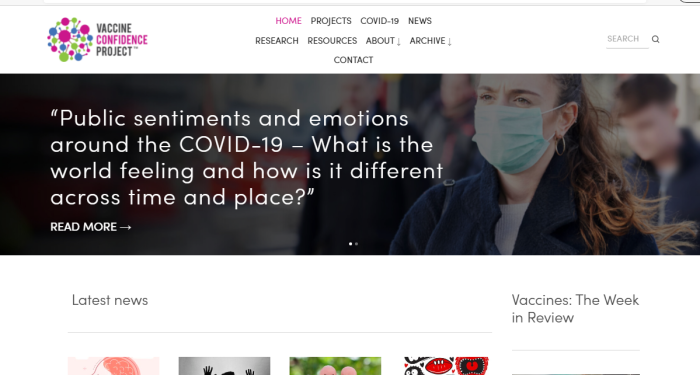

A bit of background information here. The VCP, Vaccine Confidence Program, is part of the LSHTM, or London School of Hygiene & Tropical Medicine. Both receive extensive funding from pharmaceutical companies, the Bill & Melinda Gates Foundation, the World Health Organization, and Governments.
Who else is worth noting?
- Board member, Carlos Alban (AbbVie)
- Board member, Bill Anderson (Roche)
- Board Member, Gabriel Baertschi (Grünenthal)
- Board member, Anders Blanck (LIF)
- Board Member, Olivier Charmeil (Sanofi)
- Board Member, Alberto Chiesi (Chiesi)
- Board member, Frank Clyburn (MSD)
- Board Member, Eric Cornut (Menarini)
- Board member, Richard Daniell (Teva Pharmaceutical Europe)
- Board member, Johanna Friedl-Naderer (Biogen)
- Board Member, Murdo Gordon (Amgen)
- Board member, Peter Guenter (Merck)
- Board member, Angela Hwang (Pfizer)
- Board member, Enrica Giorgetti (Farmindustria)
- Board member, Dirk Kosche (Astellas)
- Board member, Jean-Luc Lowinski (Pierre Fabre)
- Board member, Catherine Mazzacco (LEO Pharma)
- Board member, Johanna Mercier (Gilead)
- Board member, Luke Miels (GSK)
- Board member, Gianfranco Nazzi (Almirall)
- Board member, Oliver O’Connor (IPHA)
- Board Member, Stefan Oelrich (Bayer)
- Board member, Giles Platford (Takeda)
- Board member, Antonio Portela (Bial)
- Board member, Iskra Reic (AstraZeneca)
- Board Member, Susanne Schaffert (Novartis)
- Board member, Stefan Schulze (VIFOR PHARMA)
- Board Member, Kris Sterkens (Johnson & Johnson)
- Board member, Han Steutel (vfa)
- Board member, Alfonso Zulueta (Eli Lilly)
One of the major donors of the Vaccine Confidence Project is the European Federation of Pharmaceutical Industries and Associations (EFPIA). It’s Board is made of up members representing major big pharma companies.
Another donor of VCP is the Innovative Medicine Institute. Salah-Dine Chibout is on the Governing Board of IMI, and also is the Global Head of Discovery and Investigational Safety at Novartis. Additionally, Paul Stoffels is the Chief Scientific Officer at Johnson & Johnson, Worldwide Chairman of Janssen Pharmaceutical Companies of Johnson & Johnson.

The VCP also works closely with the World Health Organization, and is supportive of its mass vaccination agenda. The role with WHO is simply to market the programs to make them more effective.
The Gates Foundation has financial connections to WHO, GAVI, the CDC, and countless pharmaceutical companies. It is also connected to agencies that are involved in computer modelling, such as:
(a) Imperial College London, Neil Ferguson
(b) London School of Hygiene & Tropical Medicine
(c) Vaccine Impact Modelling Consortium
While all of this is nefarious and creepy, where does Heidi Larson fit into this? What role does she play in the system?
Larson works for both VCP and LSHTM. Her job is mostly one of research and consulting into “increasing vaccine confidence”. In layman’s terms, she is looking into ways to convince segments of the population to get vaccines at higher rates. This doesn’t involve research into CREATING safer and more effective products. Instead, it’s done to CONVINCE people that they already are. Her financial connections to companies like GSK and Merck likely influence her work.
Larson and her cronies apparently see nothing wrong with targeting pregnant women, who are the focus of the following article. Yes, damn the consequences, let’s vaxx the preggers. This, and the following information should horrify and enrage normal people.
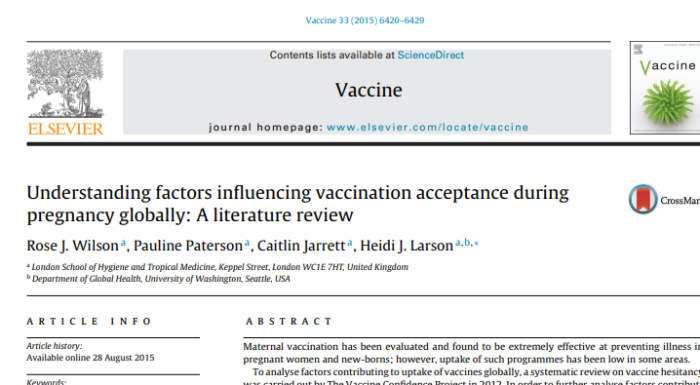
5. Conclusion
This literature review has shown that both pregnant women and HCW cite safety concerns as a main barrier to obtaining/providing influenza and pertussis vaccines during pregnancy. However responses differed depending on geographical area: inlow-income countries for example, pregnant women were more likely to cite access issues as a barrier to vaccination. There are alsowide gaps in knowledge regarding the attitudes of HCW to vaccination in pregnancy, which is significant considering the impact they have on a woman’s decision to vaccinate.
.
From the supply side, regulatory agencies still do not have a licensing pathway for many vaccines for pregnant women, manufacturers remain concerned about liability and providers perceive that pregnant women are unwilling to accept vaccines [95].
.
As the MDG era comes to an end, the development agenda beyond 2015 is widening to include other important health issues such as non-communicable diseases (NCDs). However, neither still-births nor neonatal deaths are mentioned in post-2015 documents [96] risking that the current momentum for new-born health may be lost.
.
Barriers to vaccination in pregnancy are complex and can differ from barriers and concerns affecting uptake of routine childhood vaccinations. Maternal vaccination is administered at a time when the patient is cautious about various behaviours, including taking medications and vaccinations, and feels responsible for not just her own life but of that foetus. Depending on the cultural context, different norms are also established around the time of pregnancy. Barriers also vary depending on context and target population.
.
Taking these points into account, ‘quick-fix’ interventions which aim to increase vaccination uptake, such as health communication messages and training physicians in communication strategies [97], without understanding addressing the root cause of vaccine hesitancy in specific contexts, are likely to have little effect on patients’ decisions to vaccinate or on the provider’s own confidence in communicating with parents about vaccines.
.
It is important to understand how cultural and gender dynamics in different settings can influence a woman’s decision to vaccinate. This can be done through in-depth local ethnographies, taking the views of all community members and influencers into account, complemented by in-depth individual interviews and focus groups. Research could also examine some of the complex socio-political reasons for under-vaccination in certain communities must to inform vaccination policies and delivery strategies. With more understanding of the perspectives of pregnant women, their providers and communities, maternal vaccine strategies will be more likely to reach and protect pregnant women and their newborns from preventable disease.
Rather than reading the entire paper, that’s the conclusion. First, it’s pointed out that vaccine manufacturers are concerned about liability. So they are fully aware of the damage and exposure their products can bring. Second, it’s acknowledged that women feel responsibility for not just themselves, but the baby as well. This can be manipulated and it ties into the third point, that specific messaging needs to be used on this group. Fourth, specific training to “sell” the vaccines will likely be needed. Fifth, it is higher vaccination rates, not overall safety, that is the focus.
The reference list is extensive.
Check out the actual paper.
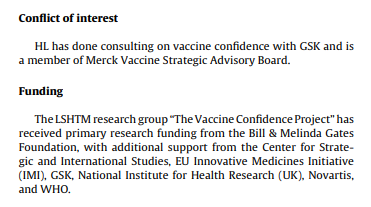
That is interesting. Not only is Larson working for the LSHTM and Vaccine Confidence Program, but she has also been employed by pharmaceutical companies GlaxoSmithKline and Merck.
Vaccine confidence concerns the belief that vaccination – and by extension the providers and range of private sector and political entities behind it – serves the best health interests of the public and its constituents. The Oxford English Dictionary defines confidence as “the mental attitude of trusting in or relying on a person or thing”. In light of that, we are not examining the well-studied domain of supply and access barriers to vaccination, but rather what is typically called the “demand” side of immunisation. However, our focus on confidence takes the “demand” rubric a step further than the more traditional notion of building demand through increasing knowledge and awareness of vaccines and immunisation to understanding what else drives confidence in vaccines, and the willingness to accept a vaccine, when supply, access and information are available. In other words, understanding vaccine confidence means understanding the more difficult belief-based, emotional, ideological and contextual factors whose influences often live outside an immunisation or even health programme but affect both confidence in and acceptance of vaccines.
The Vaccine Confidence Program believes that vaccines are good for humanity. It’s a part of the LSHTM, which is one of the biggest modelers of CV-19, predicting death waves. It also receives funding from drug companies who have a product to sell. What we have is a situation where the manufacturers, sales agents, and marketers work together under some humanitarianism guise.
October 2020, Larson co-chaired a panel on combatting pandemic misinformation. It was hosted by LSHTM and Center for Strategic and International Studies.
December 2020, Larson tweeted out — but did not condemn or question — a JAMA Network article discussing mandatory vaccinations.
January 2021, LSHTM tweeted (and Larson retweeted) a Telegraph article on combatting misinformation
January 2021, Larson was at the Pulitzer Center for a talk on combatting misinformation around CV vaccination. A look at their donors reveals the Bill & Melinda Gates Foundation, Facebook, Omidyar Network, Planned Parenthood, and the Rockefeller Foundation.
March 2021, Larson wrote a piece for the New York Times, in support of AstraZeneca. The basic premise was that the AZ vaccine was safe, and that only public perception and confidence were keeping it from being distributed. She also called for “training vaccinators” in such a way to boost the image among others. In short, train people to better sell the product.
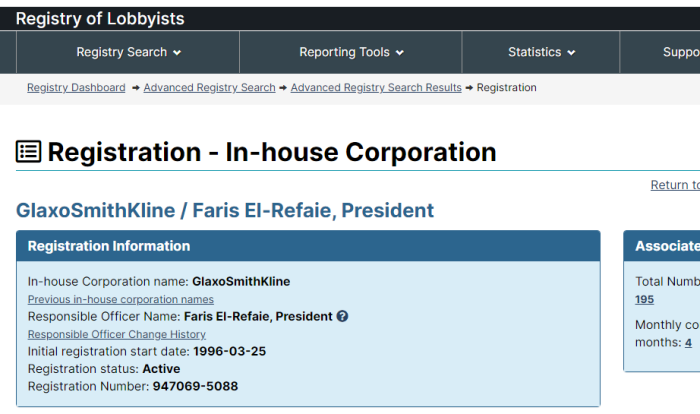

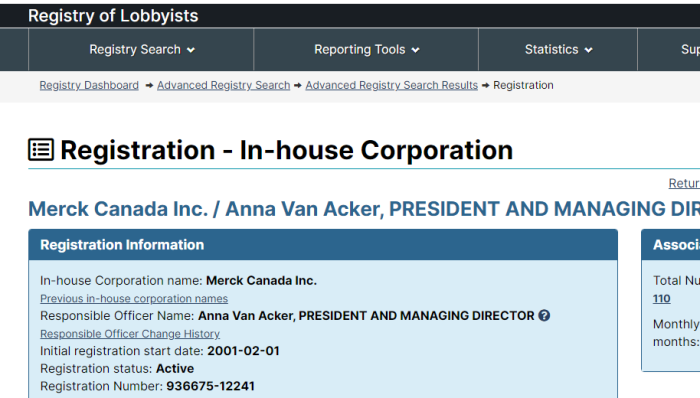
Now, this may be a coincidence, but some of the same companies that are paying for Larson’s work “increasing vaccine confidence” are also lobbying Ottawa to buy their products.
Side note with GlaxoSmithKline: Larson has disclosed being a consultant for the company. Now, in 2009, Canada gave Interim Authorization (not approval), to 2 vaccines for H1N1, Arepanrix and Monovalent Vaccine. Lawsuits were filed because the injections harmed a lot of people, but:
[19] The federal Minister of Health authorized the sale of the Arepanrix vaccine pursuant to an interim order dated October 13, 2009. Human trials of the vaccine were still underway. The Minister of Health is empowered to make interim orders if immediate action is required because of a danger to health, safety or the environment. In issuing the interim order, Health Canada deemed the risk profile of Arepanrix to be favourable for an interim order. The authorization was based on the risk caused by the current pandemic threat and its danger to human health. As part of the interim order process, Health Canada agreed to indemnify GSK for any claims brought against it in relation to the administration of the Arepanrix vaccine.
That’s one way to have high confidence in your product: make any sale contingent on getting legal immunity in advance. It’s fair to assume this latest batch came with the same conditions.
Larson’s career appears to have taken off in 2000, then she went to work for UNICEF. No surprise, but she was pushing mass vaccination even then. The bulk of her career appears to be acting as a mouthpiece for big pharma.
Canada announced the launch of a vaccine injury compensation program in December 2020, but so far, so follow-ups have been mentioned.

An interesting side note with Larson’s Twitter profile: she claims that she “did this reluctantly”. That is a strange comment. Does she not believe in what she pushes on the global population?
Anyhow, if nothing else is taken away from here, remember this: the “vaccine confidence” movement is funded by big pharma. They want to convince you that their products are safe. Just ignore the testing issues, and the indemnification agreements.
(1) https://www.vaccineconfidence.org/
(2) https://www.vaccineconfidence.org/team
(3) https://www.vaccineconfidence.org/partners-funders
(4) https://archive.is/Ah9Pw
(5) https://www.efpia.eu/
(6) https://www.efpia.eu/about-us/who-we-are/
(7) https://www.imi.europa.eu/about-imi/governance/governing-board
(8) https://www.who.int/vaccine_safety/initiative/communication/network/vaccineconfidenceproject/en/
(9) Vaccination During Pregnancy Propaganda Research
(10) Vaccine Acceptance During Pregnancy Research
(11) https://www.vaccineconfidence.org/vcp-mission
(12) https://twitter.com/ProfHeidiLarson
(13) https://www.linkedin.com/in/heidi-larson-07b535119/
(14) https://www.csis.org/analysis/call-action-csis-lshtm-high-level-panel-vaccine-confidence-and-misinformation
(15) https://jamanetwork.com/journals/jama/fullarticle/2774712?utm_source=twitter&utm_campaign=content-shareicons&utm_content=article_engagement&utm_medium=social&utm_term=122920#.X-uxuv4Z2-I.twitter
(16) https://www.telegraph.co.uk/global-health/climate-and-people/meet-scientists-tackling-vaccine-misinformation-tiktok/
(17) https://pulitzercenter.org/event/covid-19-vaccines-combating-misinformation
(18) https://pulitzercenter.org/about/donors
(19) https://www.nytimes.com/2021/03/22/opinion/astrazeneca-vaccine-trust.html
(20) https://lobbycanada.gc.ca
(21) https://www.canada.ca/en/health-canada/services/drugs-health-products/drug-products/legislation-guidelines/interim-orders.html
(22) https://www.canlii.org/en/on/onsc/doc/2019/2019onsc7066/2019onsc7066.html
(23) https://en.wikipedia.org/wiki/Heidi_Larson
(24) https://www.canada.ca/en/public-health/news/2020/12/government-of-canada-announces-pan-canadian-vaccine-injury-support-program.html
CANUCK LAW ON “VACCINE HESITANCY”
(A) Canada’s National Vaccination Strategy
(B) The Vaccine Confidence Project
(C) More Research Into Overcoming “Vaccine Hesitancy”
(D) Psychological Manipulation Over “Vaccine Hesitancy”
(E) World Economic Forum Promoting More Vaccinations
(F) CIHR/NSERC/SSHRC On Grants To Raise Vaccine Uptake
(G) $50,000 Available — Each — For Groups To Target Minorities
(H) Canada Vaccine Innovation Community Challenge

